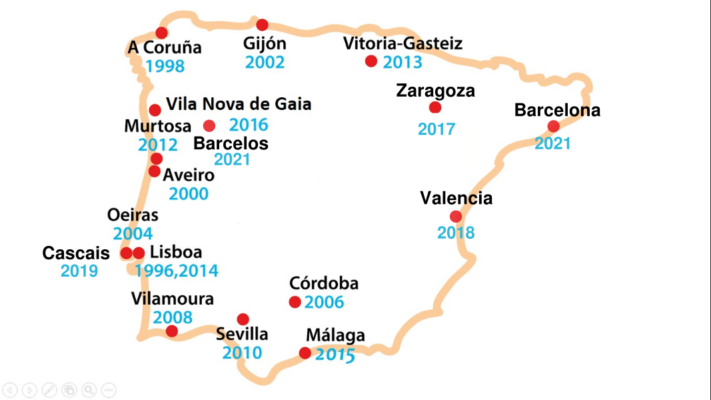Quite commonly, car drivers and decision makers are afraid of street congestion when politicians announce walking and cycling improvements. In particular, figures show that more than 40% of decision makers think so and this perception increases when dealing with cochistas. Take into account that congestion refers to everybody, independently of the way of transport they use or even without vehicle (i.e. pedestrians).
Reckoning from a higher height, a bike presents a horizontal surface no where near as width as a car. If we consider that the mean number of persons a car moves is 1,3 and that at least 4 bicycles take up the space of a car, then one can see decision makers are wrong. Indeed, documents have been published to demonstrate it. For example, the Civitas Flow project launched the 15 quick facts for cities under the European H2020 program.
This document is divided into four sections with examples from Europe and the U.S.A.:
-
The effect of walking in congestion
-
The effect of cycling on congestion
-
The effect of vehicle access restriction on congestion
-
The potential of walking and cycling to reduce congestion
The specific actions to reduce congestion range from narrowing roads to reduce crossing distance for pedestrians, pedestrians improvements to reduce bus travel time, cycling improvements to reduce car traffic and faster public transport (and commercial revenues), cycle highways reduce time spent in congestion and motor vehicle journeys, bike share programs eases congestion, new bike lanes shorten automobile travel times (thanks to smart traffic engineering) to neighborhood access restrictions lead to less motor vehicle journeys a day, short daily journeys could be walked in less than 10 minutes (or rode in even less time), millions of daily journeys made by motorized modes could be cycled in less than 20 minutes, and school street programs could avoid thousands of cars off the road during peak periods. All the facts presented in the document are real despite the utterly opinion of some people. By the way, pedestrian and bike safety is improved with the implementation of these ideas.
